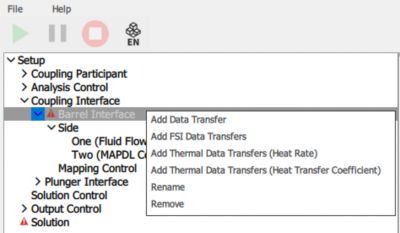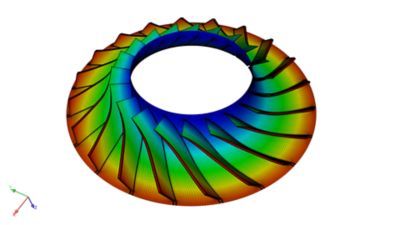Quick Specs
System Coupling can integrate multiple individual analyses, enabling you to leverage different physics solvers and/or static external data sources in a single simulation.
System Coupling solves multiphysics problems by connecting independent physics solvers and coordinating the exchange of the solution data, enabling accurate capture of complex interactions between physical models.
System Coupling manages data exchange and coordinates independent solver executions. Accurately capturing the complex interactions between physical models (typically simulated in separate solvers) are critical to understanding the problem. The result is smooth convergence of the multiphysics simulation for high-fidelity multiphysics simulations that impact engineering decisions.
System Coupling can integrate multiple individual analyses, enabling you to leverage different physics solvers and/or static external data sources in a single simulation.
January 2023
Modern product development trends drive the need for a more significant investigation of multiphysics effects. Designing close to the edge and balancing functional requirements with material and production costs requires an excellent understanding of the physics involved. This release makes it easier to build high-fidelity multiphysics workflows through enhanced user experience, improved data mapping algorithms, workflow customization through PyAnsys, and more.

PySystemCoupling enables seamless use of System Coupling technology to build multiphysics workflows directly from your Python environment.

Simplified setup of the solvers participating in the coupled solution and automatic data transfer creation democratizes multiphysics simulation.

Support for mapping complex mode shapes from a Mechanical modal analysis to a CFD blade flutter analysis provides an improved workflow for aerodynamic damping.
When two or more analyses are coupled, the combined results can capture more complex interactions than an examination of those results in isolation, enabling the prediction of complex product behavior in real-world environments where multiple types of coupled physics interact.

Ansys System Coupling streamlines the exchange of data and coordinates independent solver executions to accurately capture the complex interactions between physical models, typically simulated in separate solvers such as
SYSTEM COUPLING RESOURCES & EVENTS
如果您面臨工程挑戰,我們的團隊將隨時為您提供協助。憑藉豐富的經驗和對創新的承諾,我們邀請您與我們聯絡。讓我們共同合作,將您的工程障礙轉化為成長和成功的機會。立即與我們聯絡,開始對話。